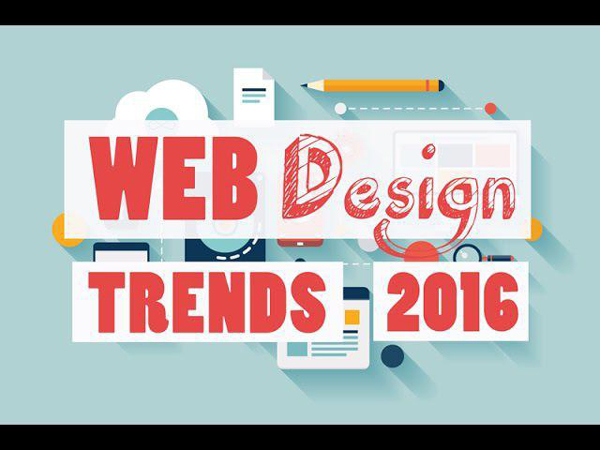The trends of website designing keep changing. While some trends resurface after some years, there also some new trends. Who can forget the dominance of minimalism and one-page design trend that dominated heavily in 2015? Web designers use to keep track of the changes to stay relevant and material design is one such trend.
In the year 2014, Google developed this design, which eventually seemed to be a promising one with its variety of advantages. Google has always initiated fresh changes like the use of flat buttons, abundance of white space use, layered card design, and much more. In this post, we are going to discuss about the material design and its emergence as a new trend in website designing in 2016.

What is Material Design?
The material design holds classic principles of a good website designing with a fine blend of innovation. This new type of design is currently receiving wide acceptance from designers all over the world. The material design consists of an impressive visual detail with a choice of bold colors and large images. It also focuses on delivering a good mobile experience. Expectations are high that it will soon become a standard for web designing. The best thing about the design is that now it is easy for Android developers to implement material design in mobile apps. As a web designer, you can achieve the right look by implementing the design carefully.
Elements of Style in Material Design
Material design is not just a design trend, but also a kind of visual language that has various well-defined elements to aid designers in having an absolute clarity while designing a website. As to achieve the right style has always been crucial for web designers, let’s have a look at the elements of style in the material design.
Color – The color palette of material design is full of vivid colors – primary and accent that a designer can customize as per the need of branding a website. It is a good practice to choose only four colors for designing. Of this, three hues must be from the primary color palette, and one accent color should be from the secondary one.
Icons – In material design, there are two types of icons – product icons and system icons. Product icons represent products, services or tools of a brand visually and system icons represent a command, common actions, etc.
Imagery – Imagery is not just for decoration but a tool to communicate effectively with the user. Whatever, you may choose, but it should be delightful, informative and at the same time relevant.
Typography – The standard typefaces for a material design are Roboto and Noto.
Writing – For addressing users, writing should be easily understandable without any errors. Particular attention is given to ensure a right tone in material design.
Reliance on card UI pattern
Card style interface is popular among mobile website designers as it offers clarity and brilliant information organization capabilities. What has been pioneered by Pinterest and later adopted by many websites is integral to material design too. A few years back, Google also launched Google Now, a kind of an intelligent personal assistant to display relevant information to Android and iOS users in the form of multiple cards. It seems everyone is following the trend. So, it comes nothing as a surprise when the recent trend in website designing i.e. material design is also seen relying upon the power and usefulness of cards.
Cards in the material design act as entry points for information. They can contain literally anything starting from stunning images to a simple link or text, but all on a single subject. It even let designers play a lot with the cards, i.e. as a designer you can add a container to wrap the card content or can add a container for the card title that will end up displaying on the screen. Moreover, it is possible to turn a grid into several cards in material design effortlessly. A tile layout can be thus, best achieved via material design.
Comparison with flat design
Most people confuse a material design with a flat one. For a layman, there seems to be no difference between the two as both are aesthetic and clean. So, here we are presenting a brief comparison as this will also help you to develop a better understanding of the material design itself.
– Unlike a flat design, which is two-dimensional, i.e. with an X and Y-axis, material design consists of a Z-axis too that offers an impression that there is a bit of skeuomorphism design on a plain surface. It includes drop shadows, which look absolutely gorgeous.
– Material design comes with a set of detailed guidelines and is not like a flat design that leaves a designer to do a lot of guesswork.
– Flat design is not interactive, but material design aids to achieve motion in web design.
– In material design, the color palette has bold hues, which are unlike a flat design having a simple and attractive color palette.
– Material design helps users to experience a sense of uniformity across all platforms and thus helps in branding, which is not in the case of a flat design. A flat design does not have much to offer to aid in branding a website.
Thus, it can be said that material design is not a very strong deviation from the popular flat design, but yes, it has its own distinctiveness that makes it a bit different from the flat one.
Google has already awarded a number of apps, which have used material design brilliantly to encourage designers. There is a strong speculation that with a powerful backing of internet giant and its own interesting features, the material design will continue to impress web designers for the next few years too. As said earlier, website designing trends keep changing. There will surely be something new in the near future.

